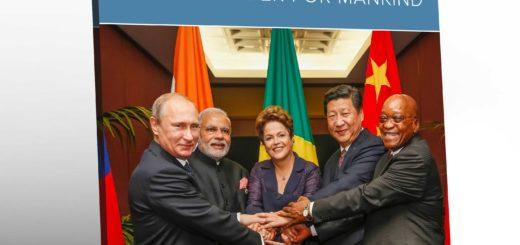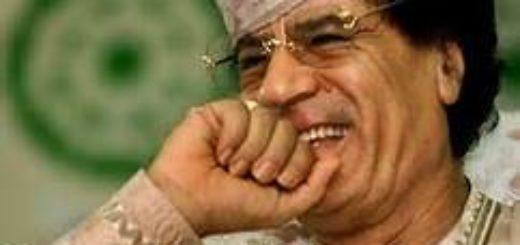WW2 Removed TWO OBSTACLES to the New World Order: Germany & Japan
This was borne out by Japan’s fate in World War Two, especially as the target of two atomic bombs. We tend to forget that the Second World War removed not one but two potential obstacles to the NWO – Germany and Japan. (And enough non-Zionist Jews were murdered to ensure the establishment of the NWO capital, Israel.)
Japan Sought Alliance With the Jews
June 29, 2014
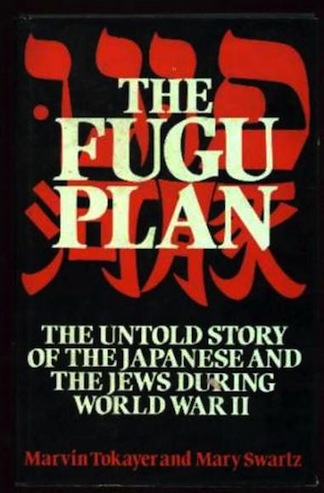
In 1905, Jewish finance enabled Japan
to vanquish Russia in the Russo-Japanese War.
In the 1930’s, Japan tried to repeat this alliance
with World Jewry. But this time, they were the nail,
not the hammer in the Illuminati game-plan.
by David Richards
(henrymakow.com)
Japan Set Up Jewish Colony in Manchuria -Revised From May 21, 2011
Under the Fugu Plan, Japan wanted to create a large Jewish colony in Manchuria and China between 1934-45. The settlements were envisaged as an ‘Israel in Asia,’ controlled by Japan.
The Japanese hoped the colonies would gain the approval of international Jewish financiers such as the Rothschilds, who would pump money into their empire.
However, the Japanese were also apprehensive about cooperating with Jews. They were well versed in the ‘Protocols of the Elders of Zion’ and were convinced of their authenticity. They viewed Jews as a subversive race who used their financial and mercantile genius to conquer nations by stealth.
This fear is reflected in the name of the plan. The fugu is a highly poisonous blowfish. After the toxin-containing organs are removed, it is eaten and considered and exquisite delicacy. If it is not prepared carefully, however, its poison will kill you.
MANCHUKUO
The first global depression had left Imperial Japan in a desperate state. Despite being the most advanced nation in Asia, Japan lacked basic raw materials such as coal, iron, petroleum, alloy minerals, water, and even food. Unable to regenerate their broken economy internally, the Japanese sought to expand.
In 1931, they invaded North China and Manchuria. The region, which had been a battleground of Chinese, Japanese and Russian interests for many decades, offered precious raw materials and markets.
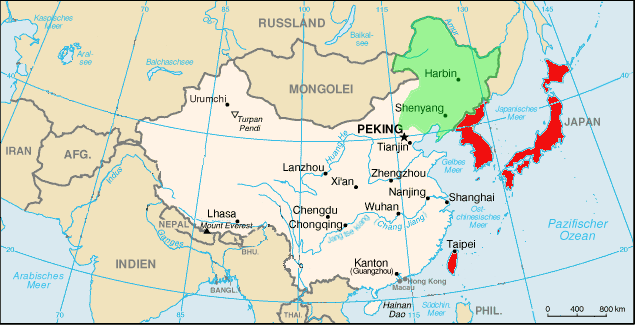 The Japanese set up a puppet state called ‘Manchukuo’ with it’s own flag and national anthem, and placed the last Emperor of the Qing dynasty, Pu-Yi, on the throne.
The Japanese set up a puppet state called ‘Manchukuo’ with it’s own flag and national anthem, and placed the last Emperor of the Qing dynasty, Pu-Yi, on the throne.
The largely rural population of 40 million was turned into slave labour to mine Manchukuo’s resources to feed Japan’s rapid militarization. Their farms handed over to Japanese immigrants. The native population was not large enough to meet Japanese needs; instead the venture whetted Japan’s appetite for the Eastern coastal regions of China.
THE LESSON OF THE HARBIN JEWS
The Japanese could not afford to develop the region especially as US-Japan relations were deteriorating. The history of the most advanced city in Manchukuo, Harbin, provided a solution.
Harbin owed its rapid rise to housing a small community of pioneering Russian Jews. In 1898, the Russians built the trans-Siberian railway through Manchuria, and developed the small fishing village of Harbin into a regional center. Tsar Nicholas II encouraged Jews to move there.
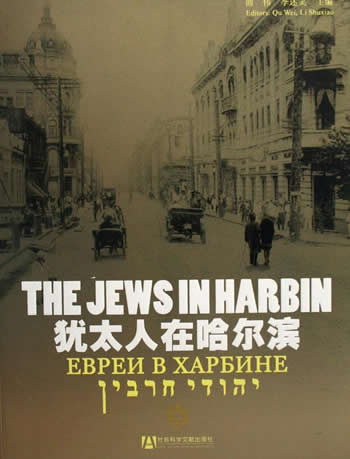 While their numbers peaked at only 25,000, the Jews started banks, oil and gas works, pharmacies, textile and clothes shops, a brewery, music shops, opticians etc, and exported goods to Europe such as North Chinese soya beans. Harbin was quickly transformed from a fishing town into a mercantile hub of East Asia with a renowned Jewish-run international trade-fair.
While their numbers peaked at only 25,000, the Jews started banks, oil and gas works, pharmacies, textile and clothes shops, a brewery, music shops, opticians etc, and exported goods to Europe such as North Chinese soya beans. Harbin was quickly transformed from a fishing town into a mercantile hub of East Asia with a renowned Jewish-run international trade-fair.
Under the local leadership of Dr. Abraham Kaufman, various Zionist youth organizations and militias were organized, and they paraded in full uniform and with flags through the streets of Harbin.
The Japanese invasion was a disaster for the prosperous little community. The Japanese began expropriating private property and allowed Russian groups to spearhead anti-Soviet and anti-Jewish campaigns. In the ensuing chaos 70% of Harbin Jews fled.
The Jewish exodus ripped out Harbin’s mercantile heart. Manchukuo’s economy began to sink even deeper and the Japanese realized that they could not develop North China without the Jews. Having learned their lesson, they drew up plans to attract and utilize Jewish capital and ingenuity.
SECOND THOUGHTS
In 1938, a high level meeting was held in Tokyo to discuss the Fugu Plan. It has become known as the ‘Five Minister’s Conference’. The debate was split between those desiring to develop good relations with world Jewry vs. those who insisted the Jews were too treacherous to work with.
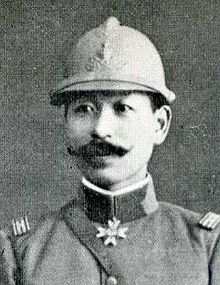 General Nobutaka Shioden,left, led the ‘no’ side. He argued that for years many countries had tried to keep a large Jewish population under control – Spain, Portugal, Russia, and Germany etc. Always, in the end, the only forms of successful “control” were slaughter or exile.
General Nobutaka Shioden,left, led the ‘no’ side. He argued that for years many countries had tried to keep a large Jewish population under control – Spain, Portugal, Russia, and Germany etc. Always, in the end, the only forms of successful “control” were slaughter or exile.
Wasn’t it bad enough that Japan’s mainland neighbour China was so thoroughly controlled by Jewish Communists? It might be suicidal to put a Jewish state in the interior of Manchukuo.
In 1934, the Soviets unveiled the Jewish Autonomous Region, popularly known as ‘Birobidzhan’, situated on the Siberian-Manchukuo border. He asked the meeting; should Japan really contemplate setting up a Jewish community so near an area that was known to be a staging ground for the Russian-Jewish takeover of Manchukuo and China?
The ‘pro’ side suggested that the settlement could be in the Shanghai area instead- or another Eastern coastal region.
Shioden disagreed, believing no matter where the Jews settled they would conspire to ruin Japan. Referring to the Protocols he reminded everyone, ‘we have seen what they themselves say are their ambitions, their goals: nothing less than the disruption and takeover of the world.’
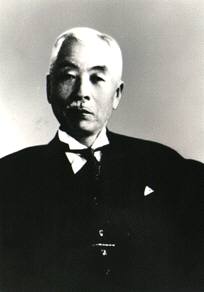 Finance Minister Seihin Ikeda, left, made the pro case. ‘Of course Japan can control the Jews! No matter where we settle them, we will maintain control over all their dealings with the outside world. Their self-government will only be on a local level… Hundreds of years ago, China permitted thousands of Jews to settle in the Kaifeng region. Did they take over! By no means! In time, China, having benefitted from their cleverness and industry, calmly swallowed them up until today there is no such thing as a ‘Chinese Jew’.’
Finance Minister Seihin Ikeda, left, made the pro case. ‘Of course Japan can control the Jews! No matter where we settle them, we will maintain control over all their dealings with the outside world. Their self-government will only be on a local level… Hundreds of years ago, China permitted thousands of Jews to settle in the Kaifeng region. Did they take over! By no means! In time, China, having benefitted from their cleverness and industry, calmly swallowed them up until today there is no such thing as a ‘Chinese Jew’.’
“And dangerous or not, we need the Jews. The settlers themselves will be an asset to Manchukuo and to Japan. As Ayukawan-San has said, ‘No Japanese has ever made a good pair of shoes. But the Jewish shoemakers…’
Even more important, their settlements will encourage other Jews to release the capital we can’t get any other way. By simply welcoming these beleaguered Europeans, we will gain affection of the American Jews who control the press, the broadcast media, the film industry… and possibly president Roosevelt himself. We cannot afford to alienate the Jews. If Japan imitates Germany’s severe control of the Jews, discrimination will develop in connection with our foreign trade. On the other hand, if Japan goes in the opposite direction and befriends the Jews, entirely new economic possibilities will open up before us.”
In the end the meeting reached a compromise, ‘our diplomatic ties with Germany and Italy require that we avoid publicly embracing the Jewish people… but we should not reject them as our allies do… This is particularly true in light of our need for foreign capital and our desire not to alienate America.’
SHANGHAI JEWS RESIST JEWISH ASYLUM SEEKERS
It was decided that Shanghai would house the biggest settlement. Plans were drawn up considering a variety of population levels, from eighteen thousand up to nine hundred thousand and all the necessities of daily life for up to a million refugees: elementary and high schools, synagogues, hospitals, sewer lines, industrial areas, park lands.
The Japanese never intended to pay all the costs themselves; rather, they hoped Jewish world bankers and industrialists would follow their lead and fund the project.
The plans were derailed though when the Jewish communities in Shanghai protested that they couldn’t accommodate anymore than a few thousand. They asked the Japanese to persuade their allies Germany and Italy to prevent Jews embarking from Europe to Shanghai.
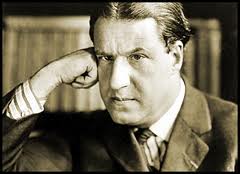 The Japanese approached Rabbi Stephen Wise,left, who they believed was the ‘power behind the throne’ in the US, noting his close relationships with Woodrow Wilson and Franklin Roosevelt. Naval Captain Inuzuka wrote, ‘He goes anywhere the President goes as the shadow follows form.’
The Japanese approached Rabbi Stephen Wise,left, who they believed was the ‘power behind the throne’ in the US, noting his close relationships with Woodrow Wilson and Franklin Roosevelt. Naval Captain Inuzuka wrote, ‘He goes anywhere the President goes as the shadow follows form.’
In 1939, Rabbi Wise dismissed any ideas of housing Jewish refugees in China. He knew exactly where uprooted European Jews were destined: either death camps or Palestine.
CONCLUSION
Ultimately ‘The Fugu Plan’ was unsuccessful, Manchukuo’s Jewish population only rose from 5,000 to 17,000, and overall only 24,000 European Jews arrived at Chinese settlements before the end of WW2.
The story is worth remembering because it contains the following lessons:
– The Japanese need for a ‘Fugu Plan’ shows that despite qualms about cooperating with the Jews, in a financial and mercantile system, Jewish people, being master merchants and financiers, were considered indispensable.
– By seeking approval from Rabbi Wise and financiers like the Rothschilds, the Japanese knew that any empire would be doomed without backing of organized world Jewry.
— This was borne out by Japan’s fate in World War Two, especially as the target of two atomic bombs. We tend to forget that the Second World War removed not one but two potential obstacles to the NWO – Germany and Japan. (And enough non-Zionist Jews were murdered to ensure the establishment of the NWO capital, Israel.)
It is also worth reading through the minutes ‘Five Minister’s Conference’. In their confused and tortured debate, we can see the Japanese were outsiders looking in. But they raised a question that has yet to be answered; what is the exact nature and scale of Jewish power?
——–
David Richards, 24, teaches English in Mongolia.


